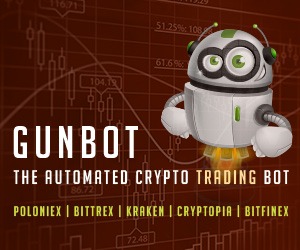Interestingly, it is clear from the comparison that the imminent (state) surveillance and restriction of the individual goes hand in hand with the invention of barbed wire. It is cryptography, however, that cuts the barbed wire around intellectual property. From today’s perspective, the mental image May chose to paint can hardly be surpassed in terms of genius and ambivalence. After all, thanks to Bitcoin, the image even works in two directions.
Barbed wire is an often underestimated invention, and few people knew what implications it would hold. In the U.S., the so-called “frontier,” or the borderland between the settled or “civilized” and the undeveloped areas, had moved farther and farther west. It was seen as a divine mandate, a “Manifest Destiny,” to settle the whole country. To this end, President Abraham Lincoln had launched the Homestead Act in 1962 . It stated that any “honest citizen” could take up land free of charge. All one had to do to claim his property was to make it his own through agricultural use.
(Source ) An advertisement for Glidden’s barbed wire. The farmer had registered his patent in 1873.
But tilling the fields in the vast prairie was difficult, for the land was practically a single open space. It was inhospitable, overgrown with wild grasses, sometimes difficult to access and used by cowboys, ranchers or Native Americans, sometimes almost nomadically. Fencing off land was either expensive or ineffective because neither wooden fences nor planted hedges could keep out unwelcome visitors.
A single and, at first glance, tiny invention changed everything from the nature of agricultural use to the treatment of public lands and even the concept of ownership: the invention of barbed wire. The new type of fence was advertised in 1875 as the “Greatest Discovery of the Age .” Patented by Joseph Glidden of Illinois, it was “lighter than air, stronger than whiskey, cheaper than dust. ” And indeed, it brought about a transformation of the American West. The double, twisted wire with spikes was used everywhere: by railroad companies demarcating their lines, by ranchers demarcating fields or raising cattle and by anyone else who used it to mark and protect what was “theirs.”
Barbed wire was a double-edged sword. Settlers loved it because it made property a fact. Cowboys, who used the free land extensively, hated the dangerous wire that led to injury and infection. Native Americans were driven farther and farther off their land because their concept of property was not to draw firm boundaries. No wonder they quickly referred to barbed wire as “the devil’s rope .” Old-time cowboys also lived by the principle that the great prairie was common property and cattle could run free under the law of “open range.”
Barbed wire was a disruptive invention and a fight quickly broke out over it. In the “fence-cutting years ,” masked gangs like the Javelinas or Blue Devils cut fences and threatened settlers who put them up until lawmakers stepped in. The barbed wire was to remain.
It is interesting that cypherpunk Timothy C. May uses the analogy of barbed wire to counter-image the invention of cryptography. It was an equally underestimated and seemingly small invention, but one that successfully played “wire-cutter.” The ideal of the free “open range” was restored and unlike the gangs that ended up being taken down, mathematics was simply unstoppable.
(Source ) Barbed wire versus the open range – a settler fencing off his plot.
The mental image is great because it turns the logic on its head. Barbed wire drew boundaries in freedom. But a tiny pair of wire cutters can undo them. And, as if with a battle cry, the “Crypto Anarchist Manifesto” ends, “Arise, you have nothing to lose but your barbed wire fences!”
Today, with Bitcoin, one of the cypherpunks’ visions has arrived in reality. In fact, we are exactly on the path that the “Crypto Anarchist Manifesto” had prophesied, in both cryptographic and economic terms. The text said that cryptographic methods would, “fundamentally alter the nature of corporations and of government interference in economic transactions.” We are well on our way to that reality, thanks to Bitcoin.
But despite how unappealing the image of the barbed wire that divided a vacant land into plots may seem to us, Satoshi Nakamoto’s mathematical-economic invention has a few similarities to the disruptive invention of barbed wire in the 19th century. At first glance, Bitcoin is also a small mathematical discovery that comes across as unassuming, but Bitcoin fundamentally changes a few things.
The ambivalence is that, on the one hand, it is indeed the vision of an “open range” that cuts through resistance, borders and (government) surveillance like wire cutters. On the other hand however, Bitcoin allows precisely the effortless demarcation of ownership. Bitcoin is a bit like “barbed wire” for property rights in the digital world. This is because it is the ingenuity of this invention, cryptographic encryption in conjunction with the timechain , that turns what was initially only a theoretical right to property into a reality.
This is because Bitcoin transactions, although pseudonymous, show many formal aspects of property rights as we know them from real estate. For example, ownership is publicly registered and shown without gaps across the interconnected blocks. This ownership is publicly accessible and verifiable for each individual. And it is ensured that no duplicate claims exist. The timechain becomes a kind of public land registry . Transferring these features and processes to a pseudonymous system is indeed unique — barbed wire and wire cutter at the same time.
While critics of the technology bother with superficial analogies like the tulip mania, Bitcoiners know that fundamental philosophical debates underlie all the issues at stake in Bitcoin. Philosophers like John Locke or Jean-Jacques Rousseau would write entire books about the fundamental questions of this digital commodity, if they were still alive.
After all, what do we actually own besides our bodies? That which we cultivate with our work? That which we transform? Or simply that which we can demarcate?
This is a guest post by Holger von Krosigk. Opinions expressed are entirely their own and do not necessarily reflect those of BTC Inc. or Bitcoin Magazine.





